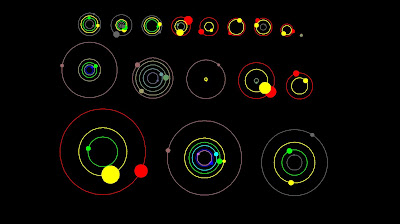
In a study published in the journal Geology, scientists at the University of Miami (UM) Rosenstiel School of Marine and Atmospheric Science suggest that the large changes in the carbon isotopic composition of carbonates which occurred prior to the major climatic event more than 500 million years ago, known as 'Snowball Earth,' are unrelated to worldwide glacial events.
"Our study suggests that the geochemical record documented in rocks prior to the Marinoan glaciation or 'Snowball Earth' are unrelated to the glaciation itself," said UM Rosenstiel professor Peter Swart, a co-author of the study. "Instead the changes in the carbon isotopic ratio are related to alteration by freshwater as sea level fell."
In order to better understand the environmental conditions prior to 'Snowball Earth', the research team analyzed geochemical signatures preserved in carbonate rock cores from similar climactic events that happened more recently — two million years ago — during the Pliocene-Pleistocene period.
The team analyzed the ratio of the rare isotope of carbon (13C) to the more abundant carbon isotope (12C) from cores drilled in the Bahamas and the Enewetak Atoll in the Pacific Ocean. The geochemical patterns that were observed in these cores were nearly identical to the pattern seen prior to the Marinoan glaciation, which suggests that the alteration of rocks by water, a process known as diagenesis, is the source of the changes seen during that time period.
Prior to this study, scientists theorized that large changes in the cycling of carbon between the organic and inorganic reservoirs occurred in the atmosphere and oceans, setting the stage for the global glacial event known as 'Snowball Earth'.
"It is widely accepted that changes in the carbon isotopic ratio during the Pliocene-Pleistocene time are the result of alteration of rocks by freshwater," said Swart. "We believe this is also what occurred during the Neoproterozoic. Instead of being related to massive and complicated changes in the carbon cycle, the variations seen in the Neoproterozoic can be explained by simple process which we understand very well."
Scientists acknowledge that multiple sea level fluctuations occurred during the Pliocene-Pleistocene glaciations resulting from water being locked up in glaciers. Similar sea-level changes during the Neoproterozoic caused the variations in the global carbon isotopic signal preserved in the older rocks, not a change in the distribution of carbon as had been widely postulated.
I don't see the paper online as yet...










